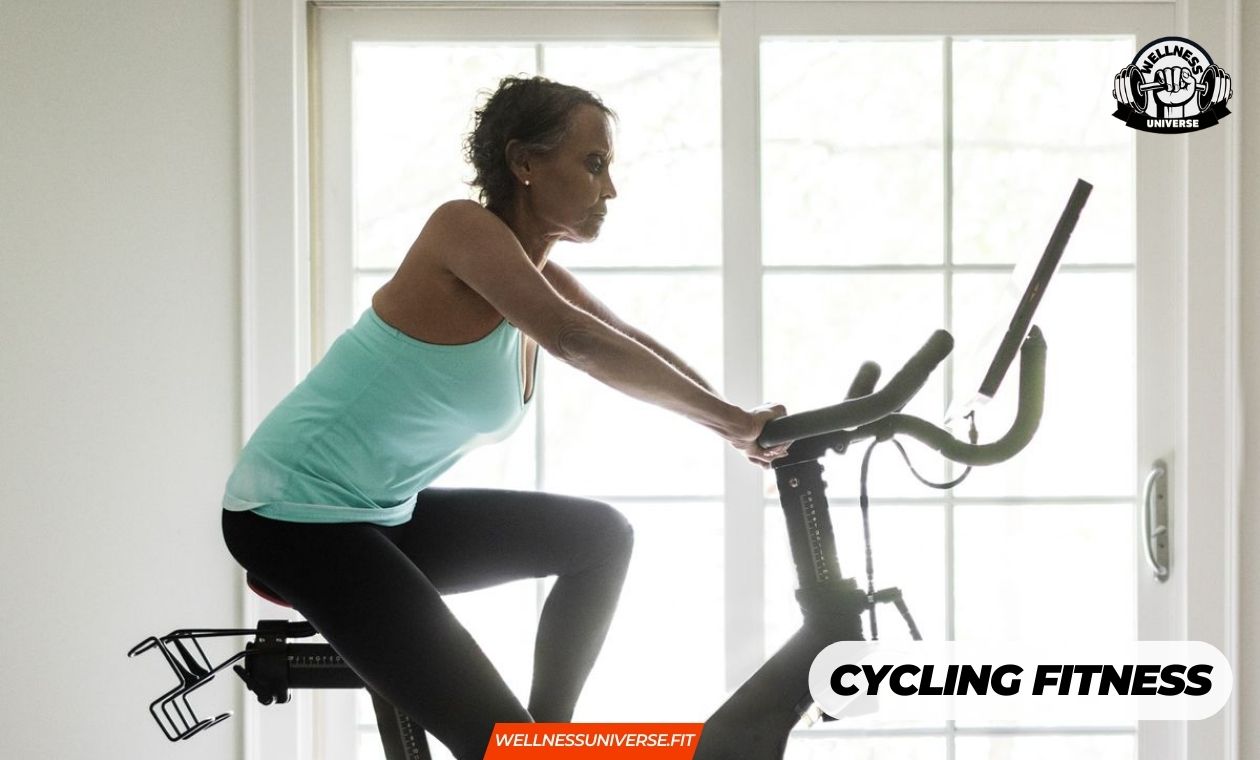Maintaining cycling fitness can be a challenging endeavor, and many cyclists have experienced periods where their fitness seems to dwindle despite their efforts. It can be frustrating to put in the time and effort, only to see your progress fade away. In this article, we will delve into the various factors that can undermine your cycling fitness and hinder your overall performance on the bike. By understanding these challenges, you can take proactive steps to overcome them and stay on track toward your fitness goals.
Cycling fitness can be compromised by various factors that may go unnoticed or ignored. It’s crucial to be aware of these pitfalls to avoid falling into them. In this section, we will explore the top ways that can undermine your cycling fitness, including:
- Neglecting the importance of recovery: Failure to give your body sufficient rest can lead to overtraining, fatigue, and potential injury. We will discuss the significance of incorporating rest days or active recovery days into your training plan for optimal recovery and performance.
- Ignoring strength training: While cycling focuses primarily on endurance and cardiovascular fitness, neglecting strength training is a common mistake. We will highlight the importance of incorporating strength exercises into your training program to enhance power output, address imbalances, and prevent injuries.
- Poor nutrition choices: Fueling your body with the right nutrients is vital for optimal performance. We will emphasize the significance of consuming balanced, nutritious meals and staying properly hydrated during and after rides. Additionally, we will caution against relying on junk food and skipping meals, as these habits can detrimentally impact your fitness.
- Neglected bike maintenance: Riding a poorly maintained bike can lead to discomfort, accidents, and reduced performance. We will stress the importance of regular bike maintenance, including cleaning, checking tires and brakes, and ensuring a well-lubricated drive train.
- Forgetting to enjoy the ride: Sometimes, the obsession with numbers and metrics can overshadow the joy of cycling. We will discuss the importance of taking in the scenery, riding with friends, and finding pleasure in the sport, as it can help rejuvenate your fitness and overall cycling experience.
By addressing these common challenges head-on and making necessary adjustments, you can avoid the pitfalls that can undermine your cycling fitness. Let’s delve deeper into each of these factors and discover effective strategies for maintaining and enhancing your performance on the bike.
Ignoring the Importance of Recovery

One of the top ways that can ruin cycling fitness is ignoring the importance of recovery. Many cyclists believe that pushing themselves hard every day will lead to faster progress and improved fitness. However, this approach can hinder your performance and impede your overall progress.
Rest days are essential for allowing your body to recover and adapt to the stress of training. During intense workouts, your muscles experience microscopic damage, and rest days allow them to repair and rebuild stronger than before. It is during these periods of rest that your body makes the adaptations necessary for improved fitness and performance.
Failing to incorporate rest days into your training plan can lead to overtraining, which is characterized by excessive physical and mental fatigue. Overtraining syndrome can have detrimental effects on your cycling fitness and overall well-being. It can lead to a decline in performance, prolonged fatigue, mood disturbances, decreased immune function, and increased risk of injuries.
Pushing your body beyond its limits without adequate rest can result in chronic fatigue, decreased motivation, and even burnout. Moreover, it increases the risk of developing overuse injuries such as tendonitis, stress fractures, and muscle strains. Ignoring the importance of recovery can significantly derail your cycling progress and hinder your ability to perform at your best.
To maintain and improve your cycling fitness, it is crucial to incorporate rest days and active recovery into your training plan. Rest days allow your body to replenish energy stores, repair damaged tissues, and adapt to the stress of training. They provide the necessary recovery time for your muscles to grow stronger and more resilient.
Active recovery, on the other hand, involves engaging in low-intensity activities that promote blood flow and aid in the recovery process. This can include easy cycling, light stretching, yoga, or other low-impact exercises. Active recovery helps flush out metabolic waste products, promotes muscle relaxation, and enhances overall recovery.
To effectively incorporate rest days and active recovery into your training plan, it is recommended to schedule them strategically. Aim to have at least one or two rest days per week, depending on your training intensity and individual needs. On these days, focus on relaxation, gentle movement, and allowing your body to fully recover.
In addition to dedicated rest days, you can also incorporate active recovery sessions between intense training days. These sessions should be low-intensity and focus on promoting blood circulation and muscle relaxation without adding significant stress to the body.
By prioritizing recovery and incorporating rest days and active recovery into your training plan, you give your body the time it needs to repair, adapt, and grow stronger. This not only enhances your cycling fitness but also reduces the risk of overtraining and injuries, allowing you to consistently perform at your best.
Neglecting Strength Training
One common mistake that can negatively impact cycling fitness is neglecting strength training. While cycling primarily focuses on cardiovascular endurance and leg strength, incorporating strength training exercises into your routine offers numerous benefits for cyclists.
Strength training helps build overall body strength, which is crucial for improving power output on the bike. By targeting muscles beyond the lower body, such as the core, back, and upper body, you create a more balanced and functional body that can better handle the demands of cycling. This improved overall strength translates into increased efficiency and power on the bike.
Furthermore, strength training helps correct muscle imbalances that may develop from repetitive cycling movements. Cyclists often develop muscular imbalances due to the repetitive nature of pedaling. By incorporating exercises that target opposing muscle groups and work on stability and flexibility, you can correct these imbalances, reduce the risk of injury, and enhance your overall performance.
Many professional cyclists recognize the benefits of strength training and incorporate it into their training routines. They understand that a strong and well-rounded physique is essential for optimal performance on the bike.
Pro cyclists like Chris Froome and Annemiek van Vleuten are known for their dedication to strength training. They integrate exercises such as squats, lunges, deadlifts, planks, and upper-body workouts to improve their overall strength and power.
By following their example, you can see the positive impact that strength training can have on cycling performance. It’s not about becoming a bodybuilder but rather about developing functional strength that supports your cycling endeavors.
Incorporating strength training into your cycling routine can have a significant impact on your power output, muscle imbalances, and overall performance.
Firstly, strength training helps increase the power output of the bike. By building stronger muscles, you can generate more force with each pedal stroke, allowing you to push harder and ride faster. Stronger leg muscles also contribute to improved climbing ability and acceleration.
Secondly, strength training addresses muscle imbalances that can occur from repetitive cycling motions. Imbalances between opposing muscle groups can lead to inefficient movement patterns and an increased risk of injury. By strengthening weaker muscle groups and improving overall muscle balance, you can enhance your cycling efficiency and reduce the likelihood of overuse injuries.
Additionally, strength training improves overall performance by enhancing stability, endurance, and resilience. It improves core strength, which plays a crucial role in maintaining proper posture and stability on the bike. A strong core helps transfer power from the upper body to the lower body, improving pedaling efficiency.
Furthermore, strength training enhances muscular endurance, allowing you to sustain higher power outputs for longer durations. It also helps prevent fatigue-induced breakdowns in form, reducing the risk of injuries caused by improper mechanics.
To incorporate strength training into your cycling routine, focus on exercises that target the major muscle groups involved in cycling, such as squats, lunges, deadlifts, step-ups, and core exercises. Aim for two to three strength training sessions per week, ensuring proper form and gradually increasing the intensity and resistance as you progress.
By neglecting strength training, you miss out on the opportunity to develop a stronger and more resilient body that can support your cycling endeavors. Incorporating regular strength training exercises into your routine will not only improve your power output and performance but also help prevent injuries and create a more balanced physique.
Poor Nutrition and Fueling
Maintaining proper nutrition is essential for maximizing your cycling performance both on and off the bike. The food you consume plays a vital role in providing the necessary energy, nutrients, and hydration to fuel your rides and support your overall health and fitness.
A balanced and nutritious diet is crucial for meeting the energy demands of cycling. It provides the necessary macronutrients (carbohydrates, proteins, and fats) and micronutrients (vitamins and minerals) that support muscle function, recovery, and overall well-being.
Carbohydrates are particularly important for cyclists as they are the primary fuel source for high-intensity exercise. Including complex carbohydrates like whole grains, fruits, and vegetables in your meals helps ensure a steady and sustained release of energy during rides. Protein is crucial for muscle repair and growth, while healthy fats provide long-lasting energy and support various bodily functions.
To optimize your cycling performance, it’s important to balance your nutrition both during rides and in your daily meals.
During rides, fueling properly is essential for maintaining energy levels and avoiding fatigue. Consuming easily digestible carbohydrates, such as energy gels, sports drinks, and energy bars, helps replenish glycogen stores and provides quick energy. It’s important to hydrate adequately during rides as well, drinking water or electrolyte-rich beverages to maintain hydration and replace lost fluids.
Off the bike, focus on consuming balanced and nutritious meals that include a variety of whole foods. Incorporate lean proteins, such as poultry, fish, tofu, or legumes, to support muscle repair and growth. Include complex carbohydrates like whole grains, fruits, and vegetables to provide sustained energy and essential vitamins and minerals. Healthy fats from sources like avocados, nuts, and olive oil help promote satiety and provide additional energy.
One of the key ways to ruin your cycling fitness is by neglecting proper nutrition. This includes skipping meals, relying on junk food, or having inadequate nutrition.
Skipping meals, especially before or after rides, deprives your body of the necessary fuel and nutrients it needs for optimal performance and recovery. It can lead to decreased energy levels, muscle breakdown, and compromised immune function. Make it a priority to consume balanced meals before and after rides to support your body’s needs.
Relying on junk food or low-quality nutrition is another pitfall that can negatively impact your cycling fitness. These foods are typically high in refined sugars, unhealthy fats, and lacking in essential nutrients. While they may provide a temporary energy boost, they do not support long-term performance, recovery, and overall health.
Instead, focus on consuming nutrient-dense whole foods that provide a wide range of vitamins, minerals, and antioxidants. Opt for lean proteins, whole grains, fruits, vegetables, and healthy fats to fuel your body optimally.
It’s also crucial to stay adequately hydrated throughout the day, as dehydration can lead to decreased performance, fatigue, and impaired recovery. Drink water regularly and consider electrolyte supplementation during intense or prolonged rides.
By prioritizing proper nutrition, fueling during rides, and avoiding inadequate or unhealthy food choices, you can support your cycling fitness and optimize your performance on the bike. A well-nourished body will have the energy, endurance, and resilience needed to tackle challenging rides and make progress toward your fitness goals.
Importance of Bike Maintenance
Maintaining a properly functioning bike is crucial for both performance and comfort during your cycling endeavors. Neglecting bike maintenance can lead to a range of issues that can hinder your overall cycling experience.
Firstly, a poorly maintained bike can significantly impact your performance. A rusty chain, clogged drivetrain, or misaligned components can lead to decreased power output and inefficient pedaling. This can result in decreased speed, reduced efficiency, and overall sluggishness on the bike. By ensuring your bike is properly maintained, you can optimize its mechanical performance and experience smoother rides with enhanced power transfer.
Secondly, bike maintenance directly affects your comfort while riding. Loose or worn-out components, such as handlebar grips, saddle, or pedals, can cause discomfort and even lead to pain or injuries during long rides. Proper maintenance ensures that all components are in good working condition, providing a comfortable and enjoyable cycling experience.
Regular bike maintenance doesn’t have to be complicated or time-consuming. By following a few simple steps, you can keep your bike in optimal condition:
- Cleaning: Regularly clean your bike to remove dirt, grime, and debris. Use a mild detergent, water, and a soft brush or sponge to clean the frame, wheels, drivetrain, and other components. Rinse thoroughly and dry with a clean cloth.
- Checking Tires: Inspect your tires for wear and tear, and ensure they are properly inflated according to the recommended tire pressure. Check for any cuts, punctures, or bulges that may require immediate attention.
- Brakes: Regularly check your brake pads for wear and replace them if necessary. Ensure that the brake levers are functioning properly and that the braking system is responsive. Adjust the brake cables if needed.
- Drivetrain: Keep your drivetrain clean and well-lubricated. Wipe down the chain, cassette, and chainrings regularly to remove dirt and excess grease. Apply a suitable chain lubricant to ensure smooth shifting and efficient power transfer.
- Components: Inspect other components such as the saddle, handlebars, pedals, and headset for any signs of damage or wear. Make sure they are properly tightened and adjusted to your preference.
If you’re new to bike maintenance or want to learn more about properly caring for your bike, there are various resources and guides available to help you.
- Online Guides and Videos: Numerous websites and YouTube channels offer comprehensive guides and instructional videos on bike maintenance. They provide step-by-step instructions, tips, and tricks for maintaining different components of your bike.
- Local Bike Shops: Local bike shops often offer maintenance clinics or workshops where you can learn essential bike maintenance skills. They can also provide personalized advice and recommendations based on your specific bike model and riding style.
- Bike Maintenance Books: There are several books dedicated to bike maintenance that cover topics ranging from basic maintenance tasks to advanced repairs. These books often include detailed illustrations and explanations to help you understand and perform various maintenance tasks.
By utilizing these resources and guides, you can enhance your knowledge and skills in bike maintenance, ensuring that you can properly care for your bike and keep it in optimal condition.
Remember, regular maintenance and proper care of your bike not only improve its performance but also prolong its lifespan, saving you money on repairs and replacements. By investing a little time and effort into bike maintenance, you can enjoy smoother rides, improved performance, and greater peace of mind on your cycling adventures.
Remembering to Enjoy the Ride
While cycling undoubtedly involves hard work, training, and pushing your limits, it’s essential to remember the true essence of the sport: enjoyment and pleasure. Finding joy in cycling not only enhances your overall experience but also has a positive impact on your fitness journey.
Cycling provides an opportunity to connect with nature, explore new places, and experience the freedom of movement. It allows you to disconnect from daily stressors and immerse yourself in the present moment. By embracing the joy of cycling, you create a positive mindset that can contribute to improved mental well-being and motivation.
In the world of cycling, it’s easy to get caught up in metrics, numbers, and performance goals. While these aspects are important for tracking progress and setting targets, it’s crucial to strike a balance between data-driven pursuits and the sheer enjoyment of riding.
Remember that cycling is not solely about speed, power output, or distance covered. It’s about the experience, the thrill of the wind on your face, the camaraderie with fellow cyclists, and the beauty of the surroundings. By focusing solely on metrics, you risk losing sight of the very reasons that drew you to cycling in the first place.
Interestingly, embracing the joy of cycling can have a positive impact on your overall fitness journey. When you genuinely enjoy what you’re doing, it becomes easier to stay consistent and committed to your cycling routine. The more you look forward to riding, the more motivated you’ll be to get on the bike regularly.
Additionally, enjoying the ride can lead to increased endurance and improved performance. When you’re in a state of joy and flow, your body and mind work together harmoniously. This can result in reduced perceived effort, increased stamina, and the ability to push your limits further.
Moreover, the mental and emotional benefits of enjoying the ride can indirectly enhance your physical fitness. Cycling becomes a stress-relieving activity that helps clear your mind, boost your mood, and reduce anxiety or tension. When you’re in a positive mental state, your body responds more effectively to training stimuli, leading to improved fitness outcomes.
By remembering to find joy and pleasure in cycling, you create a sustainable and fulfilling fitness journey. So, don’t be afraid to take in the scenic views, ride with friends, and savor the moments of pure bliss on your bike. Embrace the ride as an opportunity to recharge, rejuvenate, and enjoy the countless benefits that cycling brings to your physical, mental, and emotional well-being.
In Crux
In conclusion, maintaining and improving cycling fitness requires a holistic approach that encompasses various factors. Throughout this guide, we have explored the common challenges that can hinder your progress and provided insights on how to overcome them. By prioritizing recovery, incorporating strength training, fueling your body properly, maintaining your bike, and finding joy in the ride, you can optimize your cycling fitness and achieve your goals.
Recovery is not just a passive phase but an active part of the training process. By giving your body adequate rest and incorporating rest days or active recovery sessions into your training plan, you allow for proper adaptation, muscle repair, and prevention of overtraining. Remember that progress happens during rest, and by honoring your body’s need for recovery, you set yourself up for long-term success.
Strength training is a vital component that should not be overlooked. Incorporating exercises that target your muscles, improve power output, and correct imbalances can significantly enhance your cycling performance. Whether it’s through weightlifting, yoga, or pilates, investing time in strength training will contribute to improved power, endurance, and injury prevention.
Proper nutrition is key to fueling your body for optimal performance on and off the bike. Balancing nutritious meals, staying hydrated, and fueling during rides with the right nutrients is essential. Avoid skipping meals, relying on junk food, or inadequate nutrition, as they can hinder your progress and negatively impact your overall fitness. By nourishing your body with wholesome, balanced meals, you provide it with the energy and nutrients necessary for optimal performance and recovery.
Bike maintenance plays a crucial role in ensuring a smooth and enjoyable ride. Regularly cleaning and maintaining your bike, checking tires, brakes, and the drive train, ensures that it operates efficiently and reduces the risk of discomfort and accidents. Taking the time to care for your bike not only enhances your performance but also prolongs its lifespan, saving you from potential breakdowns or costly repairs.
Lastly, it’s important to remember to enjoy the ride. Cycling is not just about numbers and metrics; it’s about the sheer pleasure and freedom it brings. By finding joy in the ride, appreciating the scenery, riding with friends, and immersing yourself in the experience, you create a positive mindset that enhances your overall fitness journey. Don’t forget that the ultimate goal is not just the destination but the joyous journey itself.
As you continue your cycling fitness journey, we encourage you to be mindful of these factors discussed throughout this guide. By prioritizing recovery, incorporating strength training, fueling your body properly, maintaining your bike, and finding joy in the ride, you can maintain and improve your cycling fitness in a sustainable and fulfilling way.
Remember that progress takes time and consistency. Be patient with yourself and celebrate every milestone along the way. Listen to your body, honor its need for rest, and adjust your training and nutrition accordingly. Seek guidance from reputable sources, connect with fellow cyclists, and stay motivated by setting realistic goals and challenging yourself.
Cycling is not just a sport; it’s a lifestyle that offers countless physical, mental, and emotional benefits. Embrace the journey, cherish the moments, and enjoy the transformative power of cycling. So, hop on your bike, pedal with passion, and let the road guide you to new horizons of fitness, adventure, and self-discovery.
Thank you for joining us on this fitness journey! We hope you found our Cycling Fitness Mistakes you Must Avoid blog insightful and inspiring. Our aim is to provide you with valuable information, expert advice, and motivational content to support you in your wellness endeavors.
Related Post :-
- How To Do Wall Pushups
- Batman Workout
- BMI Breakthrough
- Barbell Lunges
- Better Health
- Fight Club Workout
FAQs about Cycling Killers
Can I substitute rest days with active recovery?
Yes, active recovery days can be beneficial for maintaining fitness while giving your body a break from intense workouts. Activities such as gentle rides or light stretching can aid in recovery.
Is strength training necessary for cycling fitness?
Yes, incorporating strength training into your routine can improve power output, correct muscle imbalances, and enhance overall performance on the bike.
How often should I perform strength training exercises?
Aim for two to three strength training sessions per week, focusing on exercises that target key muscle groups used in cyclings, such as the legs, core, and upper body.
Can I do strength training at home without any equipment?
Absolutely! Bodyweight exercises such as squats, lunges, planks, and push-ups can be done at home and still provide significant benefits for strength and stability.
What should I eat before and after my cycling workouts?
Before a workout, consume a balanced meal or snack containing carbohydrates for energy and a small amount of protein. Afterward, prioritize protein-rich foods to aid in muscle recovery and repair.
How can I ensure proper hydration during my rides?
Carry a water bottle and drink regularly during your rides, especially in hot weather. Aim to consume fluids that contain electrolytes to replace those lost through sweat.
How often should I clean and maintain my bike?
It is recommended to clean your bike regularly, especially after riding in wet or muddy conditions. Additionally, perform routine checks on tire pressure, brakes, and the drive train to ensure they are in good working order.
Can bike maintenance be done at home, or should I seek professional help?
Basic bike maintenance tasks such as cleaning, lubricating the chain, and checking tire pressure can be done at home. However, for more complex repairs or if you're unsure, it's best to consult a professional bike mechanic.
How can I stay motivated and enjoy my cycling journey?
Find ways to make cycling enjoyable, such as exploring new routes, riding with friends or groups, and setting personal goals. Mix up your training routine, appreciate the scenery, and focus on the overall experience rather than just performance metrics.

Meet Pradeep Singh, your go-to guide for all things fitness, health, and motivation. With over 7 years in the field, Pradeep brings a blend of expertise and real-world experience to his writing. From workout tips to healthy living insights, he simplifies complex topics, making fitness accessible for everyone. His authentic approach and genuine passion aim to inspire and support your wellness journey. Get ready to embark on a path to a healthier lifestyle with Pradeep as your trusted companion and motivator.






















